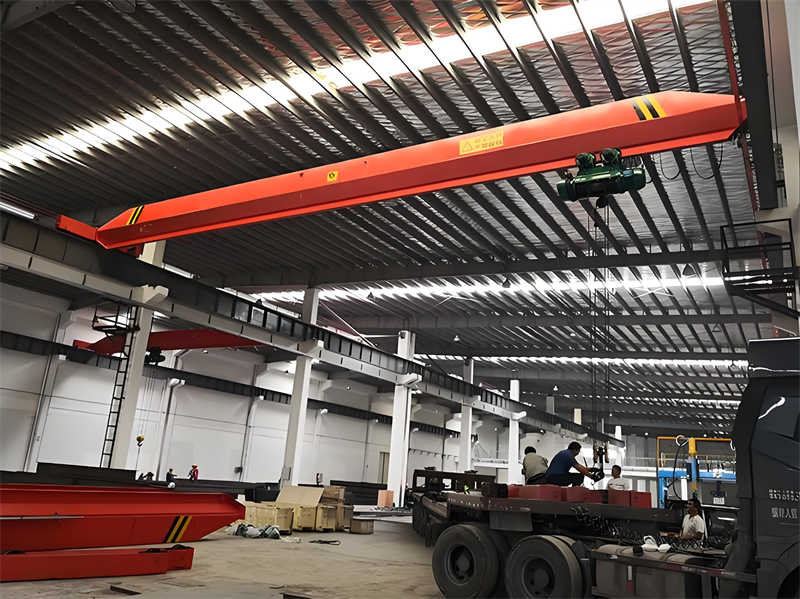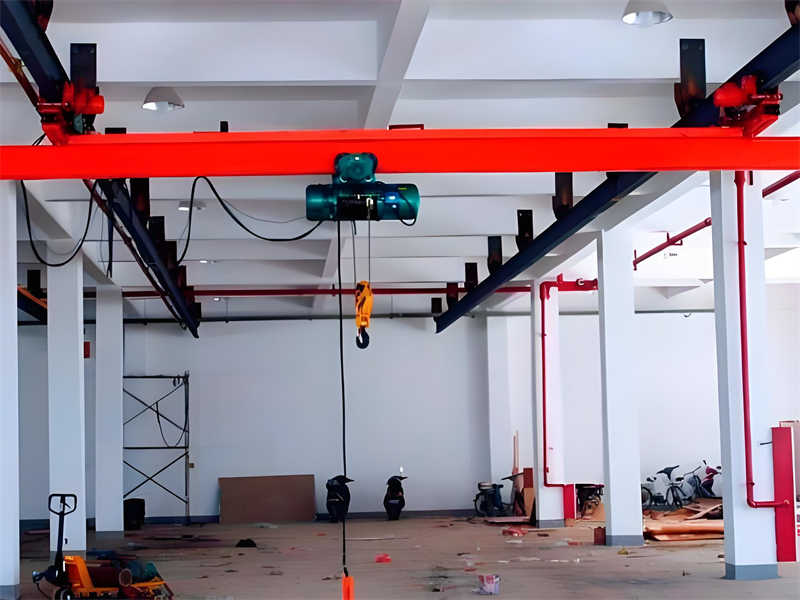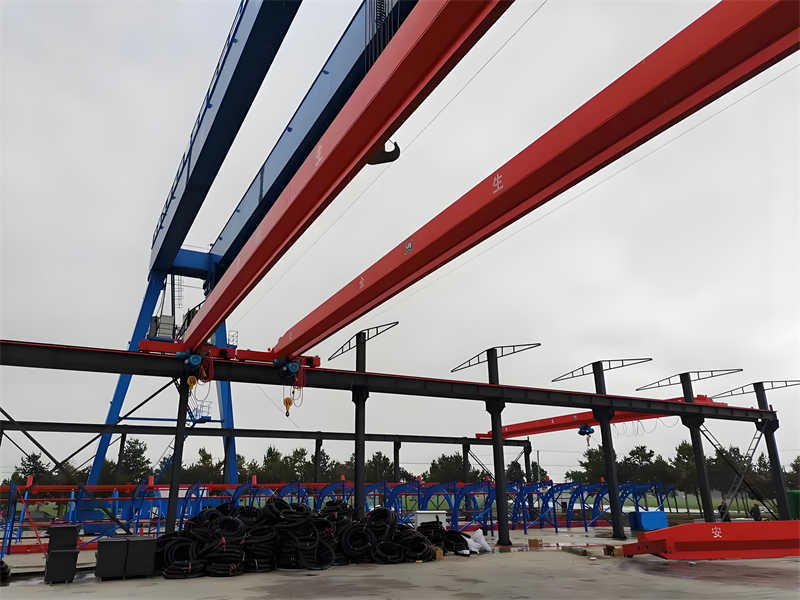24-Mar-2025
Single Girder Bridge Crane: A Comprehensive Guide for Singapore Customers
Introduction
In the bustling industrial landscape of Singapore, efficient material handling is crucial for maintaining productivity and competitiveness. Among the various lifting solutions available, the single girder bridge crane stands out as a versatile and cost-effective option. This article will delve into the specifics of single girder bridge cranes, focusing on their two primary types: top running bridge cranes and under running bridge cranes. By understanding the differences, applications, and benefits of these cranes, businesses in Singapore can make informed decisions to enhance their material handling processes.
What is a Single Girder Bridge Crane?
A single girder bridge crane consists of a single bridge beam supported by two end trucks that move along runways. The hoist and trolley mechanism travels along the bridge beam, enabling the crane to lift and move loads horizontally and vertically. Single girder bridge cranes are known for their simplicity, ease of installation, and lower cost compared to double girder cranes. They are ideal for light to medium-duty applications and are commonly used in workshops, warehouses, and assembly lines.
Types of Single Girder Bridge Cranes
Top Running Bridge Crane
A top running bridge crane is designed to run on rails mounted on top of the runway beams. This configuration allows the crane to utilize the full height of the building, providing maximum hook height and lifting capacity. Top running bridge cranes are suitable for heavy-duty applications and are often used in industries such as steel manufacturing, automotive, and aerospace.
Key Features of Top Running Bridge Cranes
- High Lifting Capacity: Top running bridge cranes can handle heavier loads compared to under running cranes, making them ideal for heavy-duty applications.
- Maximum Hook Height: The crane’s design allows for maximum hook height, utilizing the full height of the building.
- Durability: Constructed with robust materials, top running bridge cranes are built to withstand harsh industrial environments.
- Precision and Control: Advanced control systems ensure precise load handling and smooth operation.
Applications of Top Running Bridge Cranes
- Steel Manufacturing: Handling raw materials, finished products, and heavy machinery.
- Automotive Industry: Lifting and moving vehicle components during assembly.
- Aerospace: Transporting large and heavy aircraft parts.
- Construction: Moving construction materials and equipment on-site.

Under Running Bridge Crane
An under running bridge crane, also known as an underhung bridge crane, runs on the bottom flange of the runway beams. This configuration is ideal for facilities with limited headroom, as it allows the crane to operate closer to the ceiling. Under running bridge cranes are commonly used in light to medium-duty applications, such as in workshops, warehouses, and assembly lines.
Key Features of Under Running Bridge Cranes
- Space Efficiency: The under running design maximizes available floor space and is suitable for facilities with limited headroom.
- Cost-Effective: Generally less expensive to install and maintain compared to top running cranes.
- Versatility: Can be used in a wide range of applications, from light to medium-duty tasks.
- Ease of Installation: Simplified installation process, reducing downtime and labor costs.
Applications of Under Running Bridge Cranes
- Workshops: Handling tools, equipment, and materials.
- Warehouses: Moving inventory and pallets.
- Assembly Lines: Transporting components during the manufacturing process.
- Maintenance Facilities: Lifting and positioning machinery for repairs.

Advantages of Single Girder Bridge Cranes
Cost-Effectiveness
Single girder bridge cranes are more cost-effective than double girder cranes, both in terms of initial investment and maintenance. Their simpler design requires fewer materials and less complex installation, resulting in lower overall costs.
Space Efficiency
The compact design of single girder bridge cranes makes them ideal for facilities with limited space. Under running bridge cranes, in particular, maximize available headroom, allowing for efficient use of vertical space.
Ease of Installation
Single girder bridge cranes are easier to install compared to double girder cranes. The simplified design reduces installation time and labor costs, minimizing downtime and disruption to operations.
Versatility
Single girder bridge cranes are highly versatile and can be customized to meet specific operational requirements. They are suitable for a wide range of applications, from light to medium-duty tasks, and can be equipped with various hoists and trolleys to enhance functionality.
Low Maintenance
The straightforward design of single girder bridge cranes results in lower maintenance requirements. Regular inspections and routine maintenance are typically sufficient to ensure optimal performance and longevity.
Choosing Between Top Running and Under Running Bridge Cranes
When selecting between top running and under running bridge cranes, several factors should be considered:
Load Capacity
Top running bridge cranes are better suited for heavy-duty applications, as they offer higher load capacities. Under running bridge cranes are ideal for light to medium-duty tasks.
Headroom Availability
Under running bridge cranes are the preferred choice for facilities with limited headroom, as they operate closer to the ceiling. Top running bridge cranes require more vertical space but provide maximum hook height.
Building Structure
The existing building structure plays a crucial role in determining the type of crane to install. Top running bridge cranes require robust runway beams to support the crane and load, while under running bridge cranes can be installed on existing roof structures.
Budget
Under running bridge cranes are generally more cost-effective to install and maintain compared to top running cranes. However, the specific requirements of the application should be the primary consideration when making a decision.

Installation and Maintenance of Single Girder Bridge Cranes
Installation Process
The installation of single girder bridge cranes involves several key steps:
- Site Preparation: Clear the installation area of any obstacles and ensure the runway beams are properly aligned and secured.
- Crane Assembly: Assemble the bridge beam, end trucks, hoist, and trolley mechanism according to the manufacturer’s specifications.
- Runway Installation: Install the runway beams and ensure they are level and securely anchored to the building structure.
- Crane Mounting: Mount the assembled crane onto the runway beams and connect the electrical and control systems.
- Testing and Commissioning: Conduct thorough testing to ensure the crane operates smoothly and safely. Perform load tests to verify the crane’s capacity and performance.
Maintenance Tips
Regular maintenance is essential to ensure the safe and efficient operation of single girder bridge cranes. Key maintenance tasks include:
- Inspections: Conduct regular inspections of the crane’s components, including the bridge beam, end trucks, hoist, trolley, and runway beams. Look for signs of wear, damage, or misalignment.
- Lubrication: Ensure all moving parts are properly lubricated to reduce friction and prevent premature wear.
- Electrical System Checks: Inspect the electrical system, including wiring, connections, and control panels, to ensure proper functioning.
- Load Testing: Periodically perform load tests to verify the crane’s capacity and safety.
- Training: Provide ongoing training for operators and maintenance personnel to ensure they are familiar with the crane’s operation and maintenance requirements.
Safety Considerations for Single Girder Bridge Cranes
Operator Training
Proper training for crane operators is crucial to ensure safe and efficient operation. Operators should be familiar with the crane’s controls, load limits, and safety protocols. Regular refresher training should be conducted to keep operators up-to-date with best practices and safety standards.
Load Limits
Adhering to the crane’s load limits is essential to prevent overloading, which can lead to equipment failure and accidents. Load limits should be clearly marked, and operators should be trained to recognize and avoid overloading.
Regular Inspections
Routine inspections are necessary to identify and address potential issues before they become serious problems. Inspections should cover all components of the crane, including the bridge beam, end trucks, hoist, trolley, and runway beams.
Safety Devices
Single girder bridge cranes should be equipped with safety devices such as overload protection, limit switches, and emergency stop buttons. These devices help prevent accidents and ensure the safe operation of the crane.
Maintenance Schedule
Establishing a regular maintenance schedule is essential to keep the crane in optimal condition. Maintenance tasks should be performed according to the manufacturer’s recommendations and industry standards.
Conclusion
Single girder bridge cranes, including top running and under running bridge cranes, are versatile and cost-effective solutions for material handling in various industries. Understanding the differences, applications, and benefits of these cranes can help businesses in Singapore make informed decisions to enhance their operations. By considering factors such as load capacity, headroom availability, building structure, and budget, companies can select the right crane for their specific needs. Proper installation, regular maintenance, and adherence to safety protocols are essential to ensure the safe and efficient operation of single girder bridge cranes. With the right approach, these cranes can significantly improve productivity and safety in industrial settings.
Keywords
- Single Girder Bridge Crane
- Top Running Bridge Crane
- Under Running Bridge Crane
- Material Handling
- Industrial Cranes
- Crane Installation
- Crane Maintenance
- Crane Safety
- Load Capacity
- Headroom Availability

